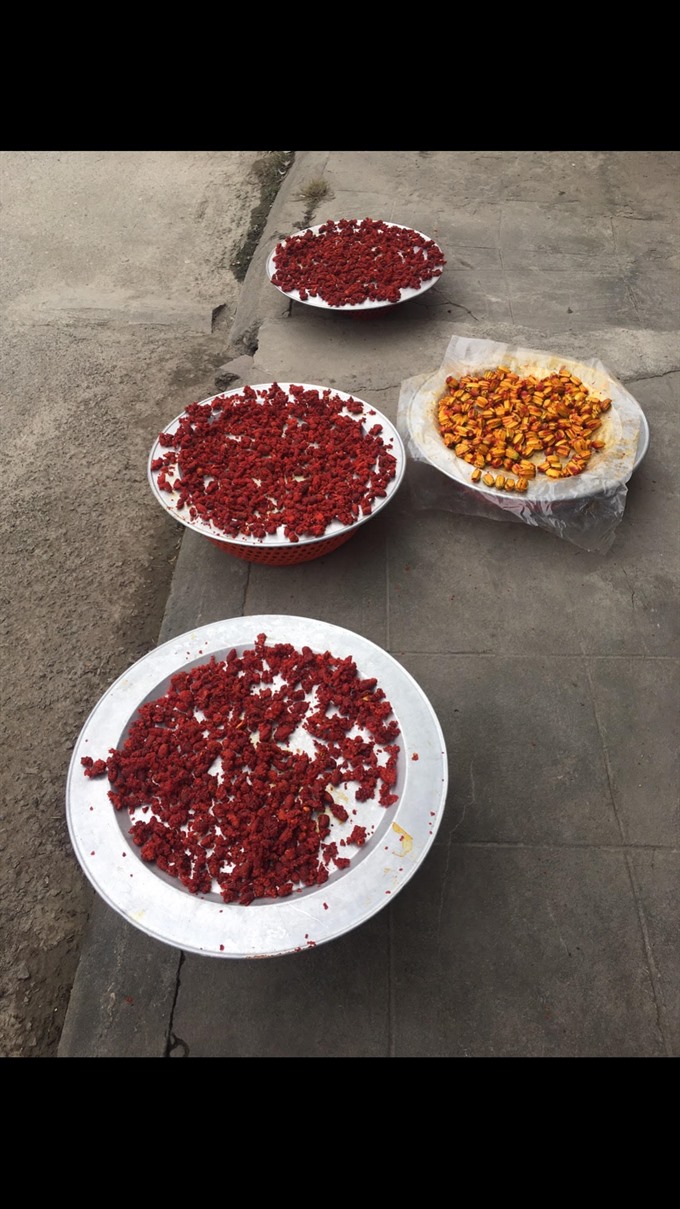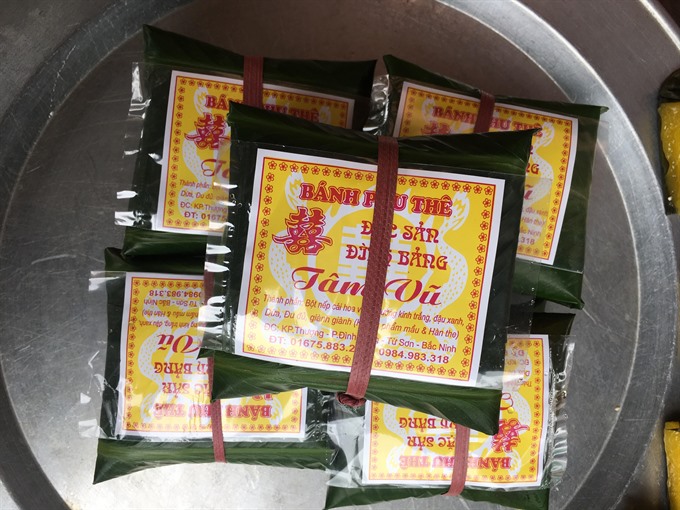Viet Nam News
By Hoang Ho
Have you ever been to a traditional Vietnamese wedding and happened to see a couple of small cakes wrapped in an attractive layer of green leaves? Well, everything has its own story and with the wedding season vibe in the air, today’s story is about Phu The cake – one of the symbolic specialties of Vietnamese wedding culture.
In my experience, there are ways to increase one’s enjoyment of a dish beyond just tasting it, and Phu The is no exception. Understanding the meaning and story behind a delicious specialty can actually help improve the taste by stimulating the imagination.
There are various tales about the cake. A legend says King Ly Anh Tong (1136 - 1175) was leading his army on the battlefield amidst a brutal war, he received a box holding a nearly decorated cake made by the Queen. The gift touched the king’s heart, so he named it Phu The (husband and wife) to honour the love of every married Vietnamese couple.
In another version, it was said that a village festival held in the Do Temple in Bac Ninh Province welcomed a visit from King Ly Thanh Tong and his wife. The local people presented a special gift to honour the presence of the King and the Queen. Delighted by the tasty flavour, the King inquired about the chef behind the masterful cake. After knowing it was made by a young married couple, he gave the cake its name to immortalise their creation.
 |
| Natural colouring: Dried danh danh (lilly) fruits, which help give phu the cakes their yellow colour. |
Whatever version is true, it comes down to a noble meaning – the wholehearted love of husband and wife stretching throughout Vietnamese history. Its values are still shining, with two cakes going together as a pair in every traditional wedding to symbolise the attachment of a married couple.
In order to satisfy our curiosity and raise our appetites, we travelled to Dinh Bang Ward, Bac Ninh Province, where the very first Phu The cakes were created hundreds of years ago.
Our visit to the Phuong Lien Phu The production facility at Dinh Bang three days ago was perfectly timed during the wedding season. Every family there was busily preparing ingredients to produce their best cakes to meet their long lists of orders.
Although each family’s cake has its own recipe and unique flavour, we could recognise many familiar ingredients such as sticky rice flour, green beans, dried papayas, coconuts and banana leaves.
We visited the family of Nguyen Ky Kiem, which has been making the dish for generations. Kiem’s wife and dozens of other family members are extremely busy during this time of the year producing and serving some of the best cakes in the area.
“The production of these cakes is an achievement that requires hard work and dedication from the whole family, so we see the cake as a family symbol, not only just a means of living,” said Kiem. “Because of the very long order list from customers, everyone has to be involved. Each member has a specific duty from washing the banana leaves to kneading flour, selecting the finest pieces of bean or cutting the coconuts and papayas. We work like a machine; each of us is a link in the chain, each one is equally important and has to work perfectly with the others.”
 |
| Perfect package: Wrapped up in leaves, phu the cakes from Dinh Bang have been famous inside and outside the country for hundreds of years. |
Kiem said the uniqueness of Dinh Bang cakes lies in the blend between the outer layer and the core of the cake. In order to create such a delicious cake, they use a special kind of sticky rice of the north.
After a week, the shape is finally formed. The final step is to mix in white sugar, papaya and other additives like banana oil, vanilla and fruit juice. The additives are kneaded meticulously into the mixture in certain proportions. The core is made of green beans, cooked and blended with white sugar and coconut milk. Finally, the delicious cakes are ready to serve.
One member of our group, Doan Tien Phan, was very impressed with the cake: “Wow, it’s so delicious! I don’t usually pay attention to the cake at a wedding, but I never thought it would be this tasty.”
“The sweetness is very natural; the layer is tough and soft at the same time,” Phan said. “Through the beautiful, crystal-clear amber layer there are pieces of coconut and I can see a yellow core in the centre. The fresh green bean flavour blends with the layer to create a unique experience.”
According to Duong, the secret of the perfect amber layer lies in the gardenia fruit. After being dried and soaked with rice, it will fade and change the colour of the rice. That’s how the cakes from Bac Ninh get the unique flavour that makes them among the best in Viet Nam.
After hearing the history of this special cake, learning about how it is made, I hope that you are excited to try Phu The.
Before leaving, each of us bought 20 pairs of cakes for VND80,000 per pair. I’m going to send them to my family, friends and colleagues from Australia, England and South Korea. – VNS